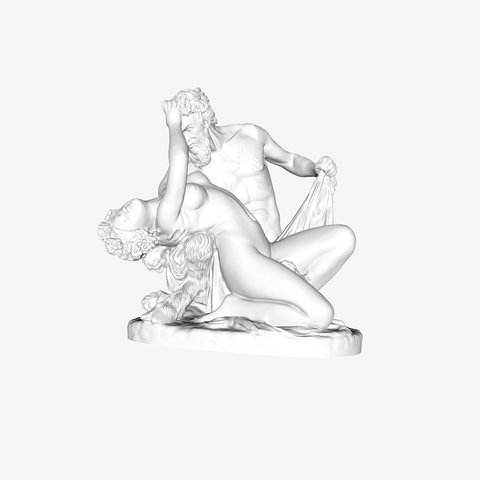
Satyre and Bacchante at The Louvre, Paris
cults3d
Charles Baudelaire sharply criticized him for the pitiful state of sculpture today, accusing his talent as being cold and academic. Gustave Flaubert, on the other hand, praised him as a true Greek, the most antique among moderns; a man who is completely absorbed in his work, undistracted by politics, socialism, Fourier or the Jesuits […], and who works diligently morning till night with a strong will to do well and a deep love of art. Both men are discussing Jean-Jacques Pradier (23 May 1790 – 4 June 1852), one of the leading artists of late Romanticism and the undisputed "king of sculptors" during the July Monarchy. This provocative marble group, masterfully crafted by one of the greatest romantic sculptors, caused a major scandal at the Salon in 1834. The government refused to acquire it, but Count Anatole Demidoff purchased it and took it to Italy, where it remains to this day. Pradier's sculpture is easily recognizable as his own self-portrait, along with that of his mistress Juliette Drouet. A classic work of art has been judged licentious by some due to its depiction of a Bacchanal scene. The marble group features a Bacchante crowned with vine leaves, languidly leaning against the satyr, easily recognizable by its goat-like legs and seductive face. The Bacchanal procession is accompanied by scenes of unbridled passion, where the drunken bacchanal surrenders to her senses in the arms of the animal that discovers her. She both attracts and repels at once. This sculpture exudes a sense of carnal eroticism, which caused a major scandal when it was first exhibited at the Salon in 1834. Despite being displayed in a small room to the side, it did not escape criticism. Landon summarized the general opinion perfectly: "An admirable piece of performance and expression; but what expression! We have no idea where this group belongs; certainly not in an institution for young people."
With this file you will be able to print Satyre and Bacchante at The Louvre, Paris with your 3D printer. Click on the button and save the file on your computer to work, edit or customize your design. You can also find more 3D designs for printers on Satyre and Bacchante at The Louvre, Paris.
